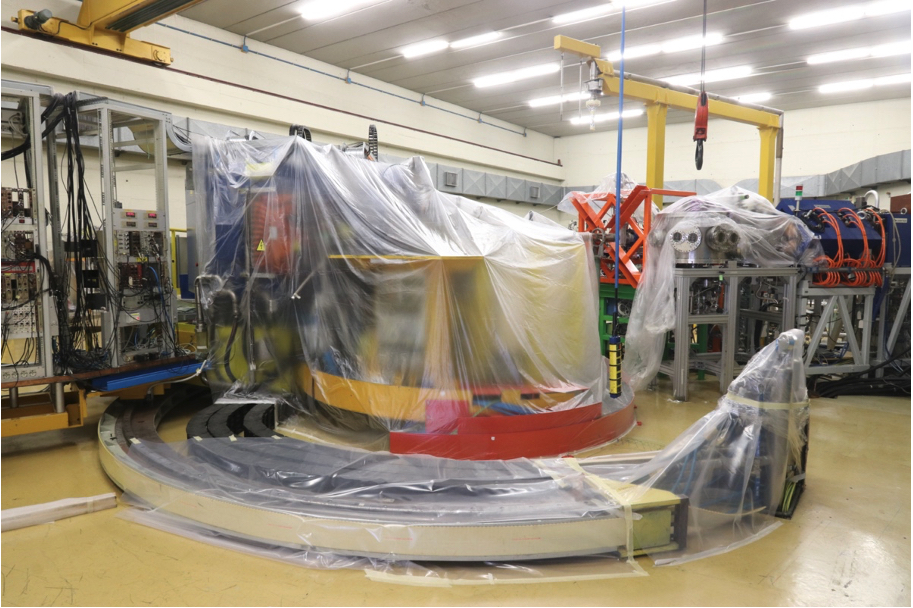The installation of AGATA at the Legnaro National Laboratories is underway
AGATA is a gamma ray spectrometer fruit of a European collaboration, made up of segmented hyper pure germanium crystals. It is the most sophisticated detector for gamma rays, completely innovative because it allows to trace the path of the single photon inside the germanium crystal with a resolution of a few millimeters. This allows to considerably increase the detection efficiency of the AGATA spectrometer and to identify with high precision the direction of the photon incident on the detector. The high positional accuracy is obtained thanks to the analysis of the shape of the electronic signals produced by gamma rays.
Thanks to these unprecedented characteristics, the AGATA detector is a real "eye" capable of looking inside the atomic nuclei produced in the collisions between accelerated ions, the type of experiments that will be carried out at the Legnaro National Laboratories (LNL) starting from 2022. With these measurements it will be possible to study in detail the properties of the excited states of atomic nuclei, thus helping us to understand the structure of the nucleus and the forces that bind protons and neutrons in it, making up the world around us. Not only that: the experiments with AGATA will also allow us to understand how the nucleosynthesis of elements occurs in stellar processes, such as mergers of neutron stars.
The arrival of AGATA at LNL therefore fits perfectly with the entry into operation at LNL, in the coming years, of the new SPES accelerator system that will allow us to study nuclear reactions using exotic, i.e. unstable, nuclear beams, thus getting closer and closer to what happens in the universe in the astronomical sites where the elements that make up our world are generated.
The Italian scientific community, represented by the staff of the National Institute of Nuclear Physics (INFN), is one of the pillars of this frontier European project for gamma spectroscopy and, not surprisingly, an important phase in the development and use of AGATA will take place in Italy in the next few years
